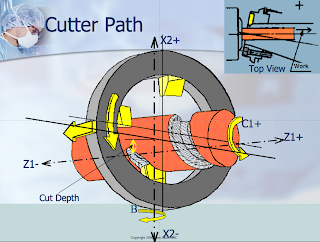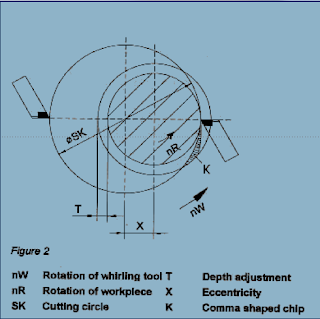I recently had a conversation with someone who told me it wasn’t possible to change over a CNC Swiss in less than two hours. Imagine my surprise, since I was doing it daily over a quarter century ago on twin turret CNC Swiss machines that lacked some of the user friendly features that are part and parcel of today’s more modern machine.
Nowadays the subject has been studied to death. There are all sorts of programs and systems available to be studied or implemented. The internet makes learning how to become more efficient free and easy. Just type “Lean Manufacturing” or “5S” into Google and you’ll find more than 3 million hits for “lean” and over 36 million for 5S.
There are also all sorts of quick change and multifunction tooling that didn’t exist 25 years ago. But before you rush out and spend lots of money on new tooling, there’s plenty of low hanging fruit to be picked first.
I’ve worked with customers whose average changeover time was around eight hours and I’ve worked with customers that switch jobs in ten minutes. Here is what I consider the major differences between the two companies:
1) Management. There is an old management adage that goes “What gets measured is what gets done.” Nothing could be truer when it comes to reducing changeover time. If management doesn’t care enough to measure results and implement changes, or to invest in additional training and resources, then the likelihood of employees caring is near zero.
2) Organization. Or “You can’t change over a machine in twenty minutes, if that’s how long it takes you to find your 5mm Allen wrench.” A program like 5S can help organize the work area as well as give you some ideas on where to start and how to
externalize tasks. While management is a key factor to success, getting organized and working more effectively is where the bulk of the savings can be had.
3) Commitment. A company with long changeover times is already feeling competitive pressure from companies that can set-up their equipment quickly. Particularly with customers that are purchasing smaller quantities with greater frequency. As a result, investing time and money seems daunting. But if not now, when? My advice is to start small. Tackle one machine, figure out what works and what does not, then take what you’ve learned and move on to the next work area.
4) First piece inspection. The machine isn’t really changed over until it is running production. You have to be able to quickly measure the first piece off of the machine. It does no good to changeover in twenty minutes, only to have the first piece sit in a QC lab for two hours.
We have posted a
presentation, that you can use to get started. If you are already working on reducing set-up times, you might find a useful tip or two.
The presentation is designed to be given in under an hour, so it can’t possibly cover everything. Two subjects which aren’t covered are multifunction tooling and modifying or customizing the machine and tool holders in order to increase the number of tools mounted.
There are several types of multifunction tooling available, some are new and others are as old as the trade. A multifunction tool that most people are familiar with is the form tool. Anything from a step drill, porting tool, or OD form tool can be considered a multifunction tool. The idea being that several features can be cut into the work with a single tool rather than with multiple tools. By having to set fewer tools, you save changeover time. You will also save cycle time in most cases since fewer tools means fewer tool changes.
Multifunction tools can also be combination tools or tools that perform more than one type of operation, such as a combination boring bar/threading tool, or drill/thread mill. Here are a few examples –
http://www.internaltool.com/products/product_detail.php?series=48http://www.internaltool.com/products/product_detail.php?series=50http://www.iscar.com/ProductLines/ProductLineDetail.asp/CountryID/1/ProductLineDetailID/331The final type of multifunction tool is designed for multifunction machine tools. More correctly it could be considered a multi-station tool or several tools mounted in one holder, which takes advantage of the indexing function of the tool spindle on multifunction machines like the Tsugami
TMU1.
Here is a link to a multi-station tool –
http://www.kennametal.com/images/flash/vid_mssg/mssg-popup.html Click on Systems, then KM25 multistation.
Finally, lets take a look at the multifunction lathe, the future of small batch machining. Often these machines are thought to be useful only for complex parts, but they are really intended for quick changeovers in small batch machining. The idea is that every tool for every job stays resident in the machine and the machine has a high degree of functionality so it can complete any part in one operation. By automating the changeover and eliminating set-ups for secondary operations, the overall nonproductive time is reduced, bottlenecks are eliminated and throughput is improved.
Multi function lathes feature large capacity automatic tool changers (ATC’s). Changeovers consist mainly of changing out the workholding and perhaps the bar feeder. The ATC automates the changeover of turning, drilling, and live tooling. Many companies are finding that automating changeovers allows more consistent results with lower skilled help performing the changeover.
Tsugami built their first multifunction lathe back in 1987. Today in addition to the world’s first multifunction Swiss model TMU1, we offer two fixed headstock models, the
TMB2 and the
TMA8.
The final consideration in reducing changeover time is to reduce the programming and prove out time when running a new job for the first time. It is essential to automate your programming and to prove out the program graphically off of the machine. In other words, you need a CAM system. We currently work with
PartMaker and
Esprit, but several other CAM Systems also support Tsugami lathes.
Ultimately the most important step is to get started. Measure and calculate your average changeover time. Set a reduction goal, and then work towards achieving it. Once you hit the goal, set another. Continue to measure and improve.








